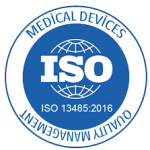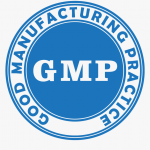What is the value?
Even all the readers know for sure but to be clear from the start: all of the above are quality management standards assured by quality management systems to protect the final consumer from industry inherent risks. But in addition, the sellers know for sure that they:
- expand sales’ channels and geographical locations,
- facilitate or even enable product registration process,
- retain customers,
- reduce the risk of legal liability or product recalls,
- bring down long-term costs.




ISO:22000 asserts quality control over the Food Production Chain and is a direct derivative of ISO:9000 which set general quality requirement standard related to a product or service.
ISO:13485 specifies requirement over ability to manufacture the medical devices. Even if organisation is involved in a part of product or service life-cycle, still it has to demonstrate its conformity to the rule-set. A frequently overlooked aspect of the standard is that organisation is responsible and accountable for outsourced processes (if this process in the scope of ISO:13485).
While the above-mentioned standards relate nicely to the Food Supplement manufacturing, why to top this up with the GMP by US federal agency of Food and Drug Administration? International Organization for Standardization (ISO) is an international standard-setting body composed of representatives from various national standards organizations. Even though some countries still favour US based GMP rule-set in their registration and audit processes. Thankfully to the progress made by the European Commission and the United States, there are now a total of 27 Member States whose inspection results the FDA can rely on to replace their own inspections. This is governed through Mutual Recognition Agreement (MRA) which is underpinned by robust evidence on both sides of the Atlantic that the EU and the US have comparable regulatory and procedural frameworks for inspections of manufacturers of human medicines.
So what? To put plainly, clients get access to the US market with valid inspections and audits conducted by the competent Lithuanian authority. Equivalent MRAs have been signed with Philippines FDA, Singapore Health and Sciences Authority, Malaysia National Pharmaceutical Regulatory Authority, Indonesia National Agency of Drug and Food Control and Thailand Food and Drug Administration. GMP certificate is a mandatory requirement for registration of medicinal product in each ASEAN Member States.
How to implement and maintain?
The implementation of ISO 22000, ISO 13485 and GMP by the USFDA is a continuous process that does not end with just a list of tasks done. Each standard raise challenges, which need to be carefully considered in order to have an integrated system, which, of course, should work properly. The primary goal of implementing standards is to examine the requirements of standards and to start fulfilling them. It is not necessary to create separate QMS systems to meet the needs of each standard, it is possible to perfectly manage processes with a single system.
During the implementation of ISO 13485, it is necessary to determine the direction in which the processes are developed, in such as: Quality Management System, Management Responsibility, Resource Management, Product Realization and Measurement, Analysis and Improvement, and also the procedures, required to perform the processes and the services properly. ISO 22000 leads to a comprehensive risk assessment not only related to HACCP (Hazard Analysis and Critical Control Points) principles, but also to external and internal processes throughout the food chain. During the implementation of the standard, the organization’s management, planning, production processes and their controls are improved. GMP by the USFDA contributes to a deeper examination of the environment, technologies and their control in the production, packaging, labelling and storage of products themselves.
Later, when the key aspects are implemented, the process management, maintenance and updating is performed using the process approach combined with the PDCA (Plan-Do-Check-Act) cycle and risk-based thinking. The process of management, maintenance and updating is carried out according to occurring innovations, changing laws, requirements of standards, recommendations of internal and external audits, clients’ recommendations and experience of qualified employees.
What does it cost?
Needless to say, that QMSs come at a cost, which is (the same as benefits) spread over all products. These costs can be broken down to implementation, licencing and human resource expenditures. Highest one-time effort went towards the initial implementation. It took over a year to establish processes, procedures, and documentation. Since then, yearly license renewals and human resources are major recurrent expenditures. We devote around 12-15% of our total personnel towards maintenance and enforcement of the quality systems with a mixture of senior and junior profiles. At least half of them follow yearly trainings to further improve their knowledge of the constantly emerging requirements and features.


